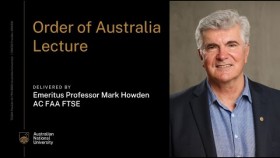Coal is on the way out, the only question is how quickly
A crystal clear message comes from the Intergovernmental Panel on Climate Change: keeping global warming to a 1.5 degrees rise would save untold damage. Achieving this means rebuilding the world’s energy systems. But decarbonisation will happen even if the 1.5 degrees goal is missed, and it will bring plenty of opportunity for Australia.
This article by Prof Mark Howden and Prof Frank Jotzo was originally published by the Sydney Morning Herald.
To keep temperature rise to 1.5 degrees, the world needs to cut greenhouse gas emissions by 45 per cent by 2030, go to net zero emissions by 2050, and suck carbon dioxide from the atmosphere to store or use. Staying below 2 degrees delays the net zero target to 2075, which is much more manageable, if still a big task.
Going to 2 degrees means practically total loss of coral reefs and impacts for sea level rise, more droughts, greater damage from extreme climate events, water, fires, biodiversity, human health and poverty. So it is worthwhile considering moving quickly.
Emissions from industry, agriculture, transport, urban and other systems will all need to decline dramatically. We can do this through increased efficiency, cleaner energy sources and better industrial technologies, better land management and climate-smart agriculture.
There is already movement in the right direction in many of these areas. But much more is needed, and faster. Take electricity supply. The IPCC’s 1.5 degrees scenarios have renewables providing three quarters or more of all electricity by 2050, with nuclear and other low emission sources making up much of the rest. Gas would provide only a small share and only where its carbon emissions can be captured. Coal would be almost completely phased out for energy production by mid-century.
This is a scary thought for fossil fuel producers. It is the underlying source of Australia’s toxic domestic politics of climate and energy policy. Some very large economic interests stand at the precipice, and they will not go down without a fight.
But it is also a golden opportunity for new industries that run on renewables, especially solar. With the dramatic reductions in costs of solar panels, large scale solar power is becoming competitive with fossil fuels. In many places solar is already the cheapest way to produce energy, and it is riding further down the cost curve. Energy storage is making rapid progress technologically and in costs.
So the question is not whether coal for energy is on the way out, but how quickly? And the question that governments should ask is: how can we make the transition socially acceptable and economically attractive?
Australia can build big export industries on the back of our unlimited renewables potential. A giant renewables project is being planned for the Pilbara, and this is just the beginning. We can make hydrogen and higher order synthetic low-carbon fuels. We can use renewable energy to supply the world with aluminium, steel and fertiliser. Australia has the land, sunshine, infrastructure, skills and political stability to succeed in a zero-carbon world economy.
To help make this happen, governments need to support the transition, not cling to models of the past. Massive amounts of private investment are set to flow to clean energy and new industries.
For the world, every tenth of a degree warming matters to limit disruption and damage from climate change. For Australia, every year matters in positioning for a low emissions world economy.
Mark Howden is professor at the ANU and director of the ANU Climate Change Institute, and Vice Chair of the IPCC Working Group on climate change impacts and adaptation. He was a Review Editor on this IPCC Report. Frank Jotzo is a professor at the ANU Crawford School and a lead author of the last and next IPCC Assessment Reports.











